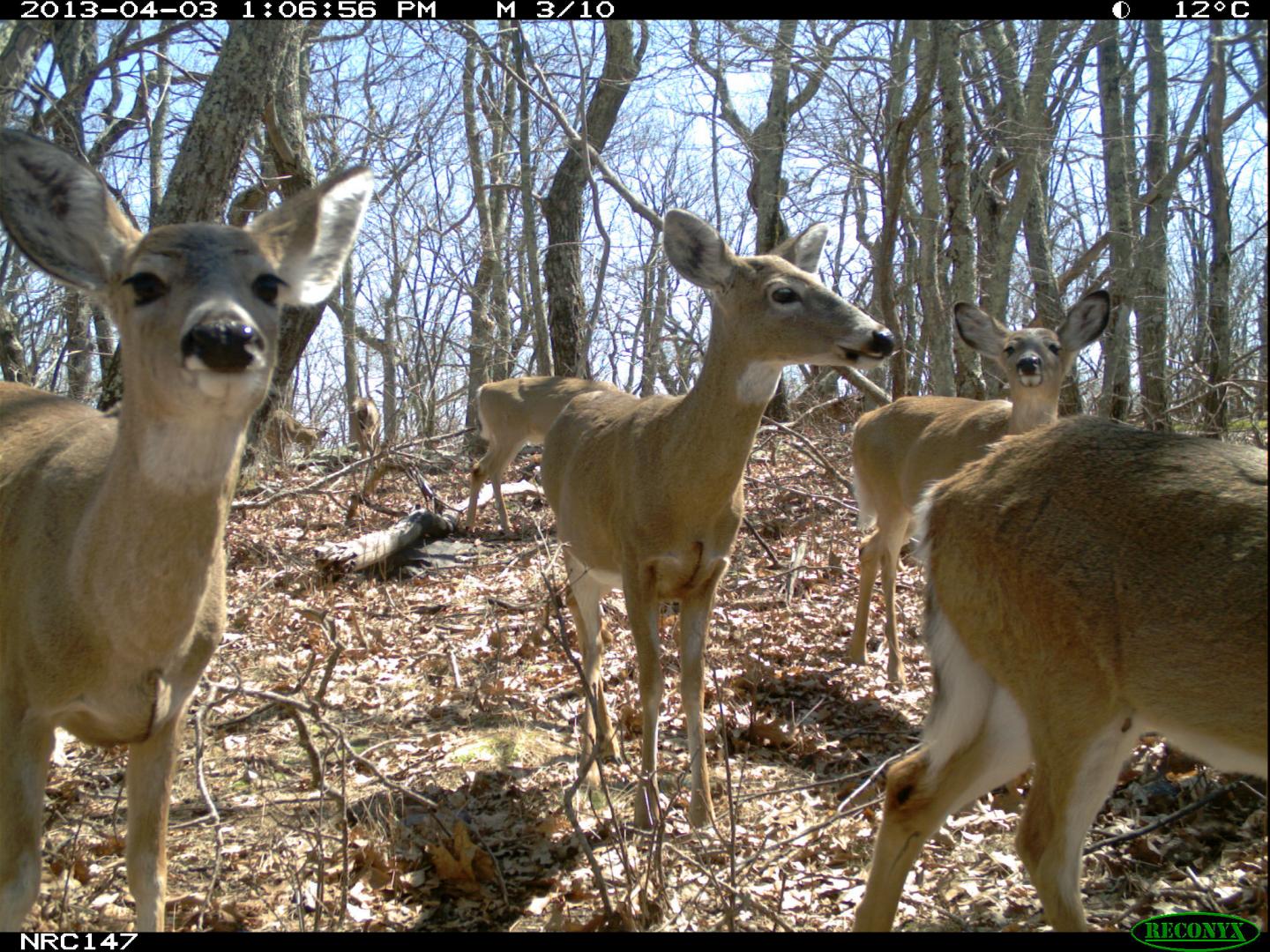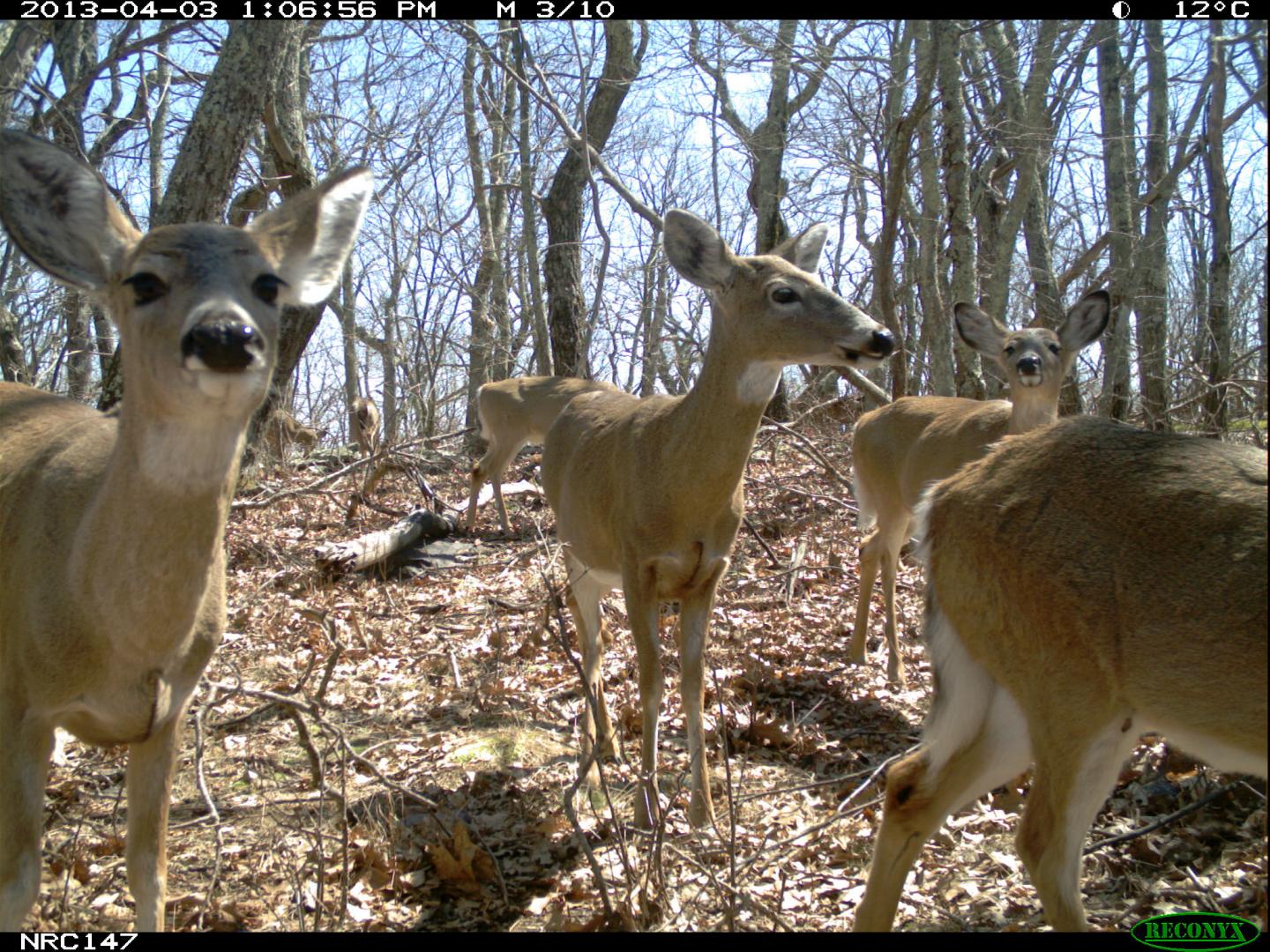
A North Carolina State University study of mammals in protected Eastern forests found that hiking and hunting caused minor effects on wildlife distribution.
The six-state study, part of the eMammal project, used citizen science camera traps to determine whether recreation activity disrupted wildlife in 32 protected forests. Researchers did side-by-side comparisons of protected areas with similar habitats but different hunting regulations, and compared sites on and off hiking trails.
"While hiking and hunting did have measurable effects on some species, the overall impact of humans in the park was minor compared with the effects of other factors, such as large undisturbed areas of forest habitat and local housing density," says lead author Roland Kays, a conservation biologist with NC State's College of Natural Resources and the N.C. Museum of Natural Sciences.
The most-hunted species in the study — white-tailed deer, raccoons, eastern grey squirrels and fox squirrels, which are common throughout the region — were detected less often at sites where hunting was allowed. Coyotes, in contrast, frequented hunting areas more often than nonhunting sites, and they did not steer clear of hiking areas.
In fact, most species in the study did not avoid hiking trails. "Some predators sought them out. While bears and bobcats shied away from people in hunting areas, the most-heavily hunted species did not, which suggests that humans aren't broadly feared," Kays says.
More than 350 citizen scientists contributed to the study over a two-year period, operating camera traps in North Carolina, South Carolina, Virginia, West Virginia, Maryland and Tennessee. To assure data quality, all images from more than 1,900 locations were also reviewed by mammal experts.
The study's methodology provides a scientific basis for evaluating wildlife conservation at protected sites that allow hiking and hunting, Kays says.
"Park managers have dual mandates that could be at odds: protecting biodiversity and providing recreational opportunities for people. This research suggests that managers are doing a good job of finding that balance and that hiking and managed hunting can be part of sustainable operations."
###
This research was funded with National Science Foundation grants 1232442 and 1319293, the VWR Foundation, the U.S. Forest Service, the N.C. Museum of Natural Sciences and the Smithsonian Institution.
Note: A synthesis and applications from the summary of the paper follows.
"Does hunting or hiking affect wildlife communities in protected areas?"
Authors: Roland Kays, Arielle W. Parsons, Megan C. Baker, Elizabeth L. Kalies, Tavis Forrester, Robert Costello, Christopher T. Rota, Joshua J.
Millspaugh and William J. McShea.
Embargoed for release: Journal of Applied Ecology
Synthesis and applications: Although we found that hiking and managed hunting have measurable impacts on the distribution of some species, these were relatively minor in comparison with the important of habitat covariates associated with land use and habitat fragmentation. These patterns of wildlife distribution suggest that the present practices for regulating recreation in the region are sustainable in in balance with the goal of protecting wildlife populations and may be facilitated by decades of animal habituation to humans. The citizen science monitoring approach we developed could offer a long-term monitoring protocol for protected areas, which would help managers to detect where and when the balance between recreation and wildlife has tipped.
Media Contact
Roland Kays
[email protected]
919-707-8250
@NCStateNews
Homepage





